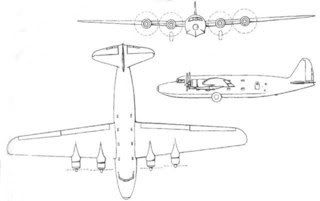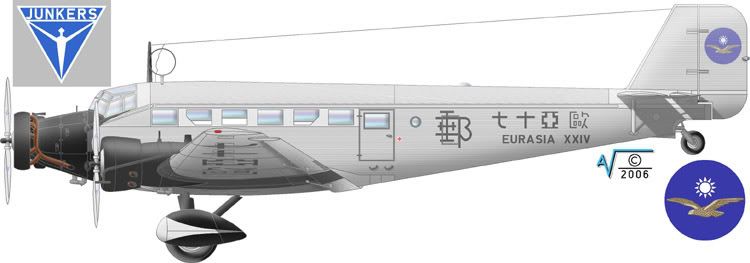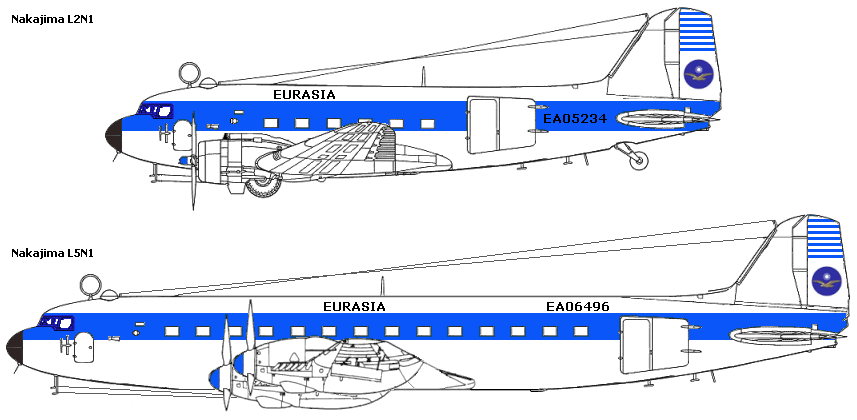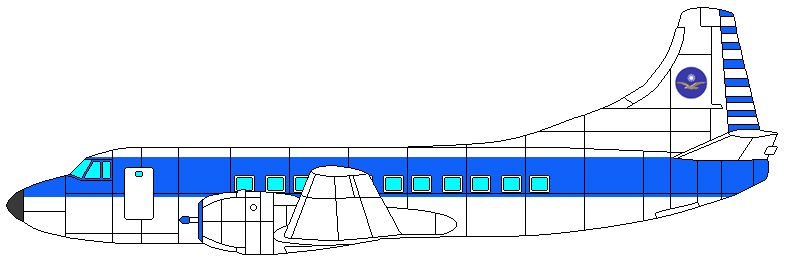 [size=1]thanks to Bruce for using the drawing; modified by me
[size=1]thanks to Bruce for using the drawing; modified by me[/size]
Technical Description
Low wing cantilever monoplane with constant taper from roots to tip. Incidence at root four degrees. Centre-section of three spar construction, spars passing through the fuselage to which they are permanently attached. Self-sealing fuel tanks built integrally with the structure. Outer wings have a single main spar. Structure of centre-section and outer wings completed by former ribs, spanwise stringers and a smooth metal skin. Slotted flaps from fuselage to ailerons. Flap doors on wing under surface are automatically retracted to permit smooth flow of air through slot when flaps are down. Both flaps and ailerons are single-spar metal structures. Controllable tabs in ailerons.
Fuselage is a semi-monocoque structure, consisting of aluminium-alloy ring and partition bulkheads, longitudinal stiffeners and circumferentials, the whole covered with smooth metal skin. Automatically-controlled supercharging and pressure regulating equipment provided, with a pressure differential of 1750 kg per square meter between outside atmospheric pressure and inside pressure.
Cantilever monoplane type tail unit. Fin and tailplane have two-spar frames covered with smooth metal sheet. Tailplane units have removable leading edges and detachable tips, and are interchangeable from right to left. Rudder, which is statically, aerodynamically and dynamically balanced by lead weights, has single-spar and metal covering. Elevators, with similar balances to rudder, have single spar frames, metal leading edges and metal covering.
Retractable tricycle-type undercarriage. Each unit of the main gear has twin wheels and single shock-strut. Steerable nose wheel has single wheel. Hydraulic retraction, the main wheels being raised forward into the inboard nacelles and the nose wheel backward into the fuselage. Manual emergency hear. Automatic devices provided to prevent retraction while any load remains on the undercarriage. Dual hydraulic brakes on each main wheel.
Four Brandenburgische Motorenbau 328 eighteen cylinder radial air-cooled engines rated at 2,100 hp for takeoff and 1,950 hp at 7,600 metres. Three bladed VDM controllable pitch airscrews. Long chord NACA cowlings. Fuel tanks in wings for 6,800 litres. Oil tanks (total 164 litres) located in each engine nacelle.
Accommodation for a crew of six, comprising pilot, second pilot, flight engineer and wireless operator, plus two stewards. Flight deck accommodates pilot and second pilot side-by-side with dual controls, and flight engineer and wireless operator behind. Compartment aft of the flight deck provides accommodation for the stewards, with lavatory and galley. Main compartment is equipped with fifty-eight seats, but this could be increased to seventy-two in high-density configuration; the main compartment is fitted with overhead racks for passenger luggage. Coat room, buffet and food storage spaces, plus additional lavatory, aft of the main compartment. All spaces are pressurised and sound-proofed. Heating and ventilating system, full wireless equipment and air navigation equipment including Lorenz blind approach receiver, etc.
Span 35.8 metres; Length 32.5 metres; Height 8.66 metres. Wing area 135.75 square metres. Maximum gross take off weight 40,550 kg.
Maximum cruising speed 534 kph at 7,600 metres. Normal cruising speed 445 kph. Range with payload of 8,800 kg – 5,500 kilometres.
[size=1]
copied from the German Encyclopedia[/size]






